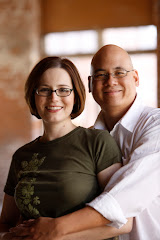After reading the text, one particular founder of ECE stands out, Comenius. Looking at all of his ideas and theories of teachings at the time, he was progressive for his time. I see his ideas woven throughout our current philosophies of education and still practice his ideas. My peer review is to show the threads of Comenius’ ideas in today’s educational landscape.
The answer is in the comment section.
Module 6 Poetry, Drama, Film, Response
14 years ago


5 comments:
The answer is in the comment section.
· Grading of school—his concept of separating into grades and one must master a grade before going on to the next—this is how the current public and private education systems work in the United States today
· Universal education for all young people, male & female, of all classes and all abilities—Public education today is available for all. Head Start has been created for children from disadvantaged homes and laws are in place that entitles all children to a free and appropriate public education.
· The same subjects to be taught in each level with increasing complexity. This idea was most recently introduced into the school system by Jerome Bruner(1960) (I love him) as the spiral curriculum. This idea is to continually teach basic concept but make the discussion and exposure more complex to be appropriate for the intellectual abilities of the children.
· Initiated a school system that was developmentally appropriate and individualized instruction—NAEYC’s 1996 position statement on Developmentally Appropriate Practices offers the framework to create an educational environment both age and individually appropriate. Furthermore, special education has Individual Family Transition Plans (0-3) and Individual Education Plan (3 and older) that develops individualized goals in areas of weaknesses for each child. (PL94-192)
· Teach from concrete to abstract—Piaget, in the 20th century, developed stages of development. Piaget explains that children move from concrete operational to thinking in more abstract thoughts.
· Play is imitation of adult activities. Piaget and Vygotsky both discuss the use of play by children in their development. Piaget (1962) believes play is pure assimilation, a way to internalize external information into a child’s schema. A child practices what they see adults doing. Vygotsky (1978) theorizes that play satisfies a need to do activities that children cannot do in reality.
Bruner, J. (1960). The process of education. Cambridge, MS: Harvard University Press.
Piaget, J. (1962). Play, dreams, and imitation in childhood. W. W. Norton & Co.: New York, New York.
Vygotsky, L. S. (1978). Mind in society: The development of higher psychological processes. Cambridge, MA: Harvard University Press.
Jennifer- I was thinking the same thing when I read this section. I will post a more detailed description of my ideas related to this topic later this week.
It was quite interesting to track Comenius' ideas and see what a forward thinker he was for his time. He viewed the mother as the first teacher and wanted to support and encourage the mother rather than remove the child from the home for training. The fact that he encouraged the education of women was a new idea. The fact that he introduced picture books and saw certain content of books as necessary for the mental stimulation and development of children is something I particularly appreciate as I peruse my collection of children's books. We can see many of his ideas at work today.
Comenius
Lascarides & Hinitz (2000) discuss Jon Amos Komensky or Comenius and his views on education. His ideas relate to many current practices or issues that teachers face today.
One idea mentioned in chapter 2 related to Comenius’s views on bilingual education. After struggling to learn Latin as a child, Comenius created a text to help beginning Latin students learn simple phrases that related to everyday life. In this book, Comenius not only included the Latin sentences but also the equivalent phrases in the native language of the reader. When reading this section of the chapter, it reminded me of some of the language classes that I took in high school. In these classes, the text related the new language not only to English but also to everyday situations like ordering a coffee in a café or buying a train ticket.
Another idea developed by Comenius was the creation of a school that had different grades where each level prepared the student for the next year of school. This structure of schooling is used widely throughout the world. In addition, he stressed the importance of educating everyone. Comenius believed that all children should have the opportunity to learn. According to Lascarides & Hinitz (2000), “Comenius recognized the importance of early childhood education and saw it as the key to equality of opportunity…” (p. 42). This philosophy relates to the No Child Left Behind legislation. Although this policy has not been successfully implemented, the intended effect was to create meaningful educational opportunities for all learners to ensure that every child succeeds academically.
Comenius believed that children start learning at birth therefore it is important to educate mothers, children’s first teachers, on what children need to learn. In addition, Comenius thought that it was pertinent for mothers to take care of themselves during pregnancy to ensure a healthy baby. These ideas are reflected in many of today’s early childhood programs. When reading this section, I thought specifically of Head Start and Early Head Start programs that help not only educate children but also their parents.
It appears that many of Comenius’s ideas have stood the test of time since they are still relevant in today’s educational landscape. Comenius seems to have been a man before his time when it came to his views on education.
Jennifer
Great work tying Comenius's ideas to current educational practices. Good connection to Bruner and the spiral curriculum. In addition, I liked how you included the relationship of his ideas about individualized instruction to NAEYC and special education practices.
Post a Comment